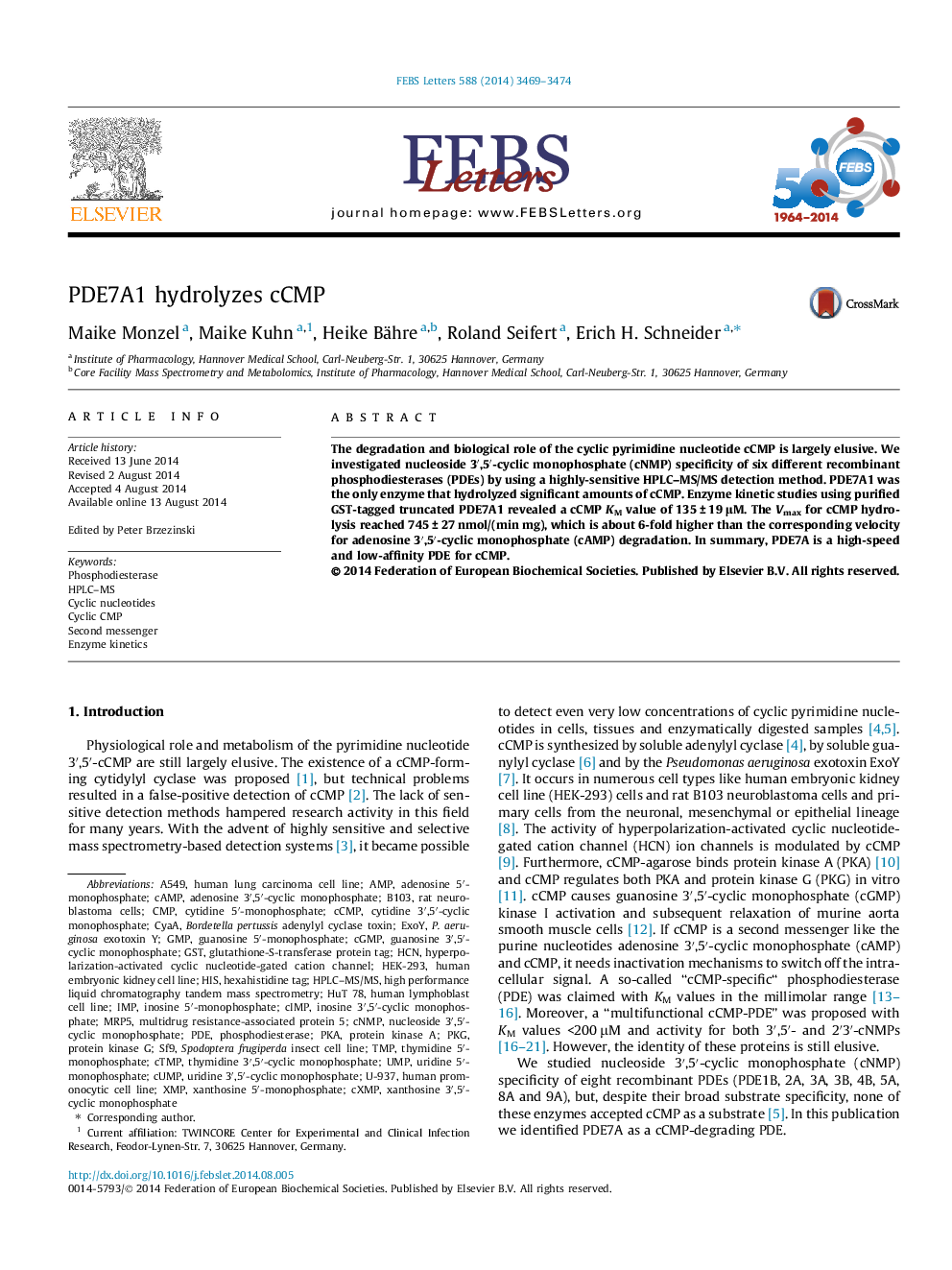| Article ID | Journal | Published Year | Pages | File Type |
|---|---|---|---|---|
| 10870426 | FEBS Letters | 2014 | 6 Pages |
Abstract
The degradation and biological role of the cyclic pyrimidine nucleotide cCMP is largely elusive. We investigated nucleoside 3â²,5â²-cyclic monophosphate (cNMP) specificity of six different recombinant phosphodiesterases (PDEs) by using a highly-sensitive HPLC-MS/MS detection method. PDE7A1 was the only enzyme that hydrolyzed significant amounts of cCMP. Enzyme kinetic studies using purified GST-tagged truncated PDE7A1 revealed a cCMP KM value of 135 ± 19 μM. The Vmax for cCMP hydrolysis reached 745 ± 27 nmol/(min mg), which is about 6-fold higher than the corresponding velocity for adenosine 3â²,5â²-cyclic monophosphate (cAMP) degradation. In summary, PDE7A is a high-speed and low-affinity PDE for cCMP.
Keywords
U-937PKGSf9A549HEK-293cNMPcCMPExoYCyaACIMPCTMPXMPThymidine 5′-monophosphateinosine 3′,5′-cyclic monophosphatenucleoside 3′,5′-cyclic monophosphateuridine 3′,5′-cyclic monophosphateCyclic CMPXanthosine 5′-monophosphateUMPGSTcGMPPDEGMPCMPpKaTMPAMPIMPHCNinosine 5′-monophosphatecAMPguanosine 3′,5′-cyclic monophosphateHPLC–MSHPLC–MS/MSuridine 5′-monophosphateadenosine 3′,5′-cyclic monophosphateadenosine 5′-monophosphatehexahistidine tagcUMPHIShuman embryonic kidney cell linecytidine 3′,5′-cyclic monophosphatecytidine 5′-monophosphateEnzyme kineticsHigh performance liquid chromatography tandem mass spectrometryPhosphodiesteraseCyclic nucleotidesprotein kinase Aprotein kinase Gsecond messengerGuanosine 5′-monophosphate
Related Topics
Life Sciences
Agricultural and Biological Sciences
Plant Science
Authors
Maike Monzel, Maike Kuhn, Heike Bähre, Roland Seifert, Erich H. Schneider,
